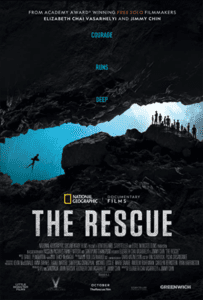By Dom Cioffi
I was lucky enough to grow up next to a municipal playground. I could run from my back door to acres of limitless fun within 60 seconds. A pool, jungle gyms, baseball field, a hill that was perfect for winter sledding, and numerous tennis and basketball courts were always at my beck-and-call.
While tennis was of little interest to me, I did enjoy searching for the mis-hit balls that players would unintentionally jettison over the surrounding fence.

Some of the more patient players would take the time to locate an errant shot, but most would simply pop open a new can and get on with their match. The lost balls would nuzzle into the uncut grass that blanketed the nearby hill and remain there until someone wandering past discovered them.
I enjoyed the solitude of strolling through the tall grass, eyes peeled in search of tiny treasures. Nowadays, I enjoy the same sensation when I wander the tree-lined fairways of my golf course looking for stray Titleist golf balls.
Any tennis balls I found would eventually end up in a neighborhood baseball game or in my mom’s tennis bag. On occasion (and if the ball was in good enough condition), someone playing on the courts would offer to buy it for a quarter.
Another spot that always collected tennis balls was the drainpipe that pulled rainwater off the courts and into a nearby brook. This horizontal pipe buried just below ground was about 25 feet long and 18 inches in diameter. Errant balls would roll near the edge of the court, and if the trajectory was just right, they would slip into the drainpipe. It wasn’t uncommon to hear players scream when one of their new balls disappeared inside.
After an ample rainstorm, these lost balls would travel slowly through the pipe and either wash away into the brook on the other side of the fence or collect in the grass at the water’s edge.
On my jaunts through the playground, I would often glance into the pipe to see if any balls were within reach, just like people used to check pay phones for leftover change. Occasionally one would be sitting there ripe for the picking, but usually any strays were a good distance back inside the pipe.
I’ll admit that the allure of looking into that drainpipe and seeing a brand-new tennis ball was sometimes too much to bear. Being an adventurous youth, I would occasionally lie down and crawl inside to retrieve one. I’d slide in a bit, but never so far that I was completely inside the pipe.
One day, a friend and I peered inside the drainpipe and spotted a bright blue tennis ball — a true gem in mint condition! Rarely would you find a blue ball, maybe a white or a pink on occasion, but never blue. We simply had to have this rare collector’s item.
It was decided that, even though this ball was farther in than I had ever gone, I would give it a shot. And so, I stuck my arms in first and started inching my way forward. The dirt that had washed through the pipe scratched my stomach as I crawled, and the sound of my breathing echoed through the cylinder with each grunt-infused push.
I kept my eye on the prize, but as I got closer, I became preoccupied with how tight the pipe felt around me. Before I knew it, I was starting to panic. Suddenly all I could think about was being trapped. I began to scream for help and tried to push myself backwards, but my outstretched arms — which I could not slide underneath me — kept me from gaining any leverage.
Everything started to spin as my heart pounded through my chest. The sound of my screams reverberated around my body at a deafening level. But thankfully, just as I was about to lose total control, two hands wrapped around my ankles and pulled me out.
To this day I find it hard to think about that experience and have steadfastly avoided any situation that might place me into an overtly small space.
This week’s film, “The Rescue,” is a National Geographic documentary based on the Thai cave rescue in 2018 of 12 young soccer players and their coach. The group had gone into a well-known public cave to celebrate one of the boys’ birthdays. Unfortunately, a fast-approaching storm flooded the cave and trapped the boys. In an effort to survive and avoid the encroaching water, the group journeyed deeper into the tunnels.
This documentary, using actual footage collected from the Thai Navy Seals, gives the viewer a harrowing lens into one of the greatest rescue missions ever performed. It also highlights the elite group of spelunkers from around the world who assembled to plan and execute this unique and incredibly dangerous extraction.
Check this one out even if you hate small spaces. It is truly one of the most miraculous rescue events ever documented.
A heroic “A” for “The Rescue,” available for streaming on Disney+.
Got a question or comment for Dom? You can email him at [email protected].




